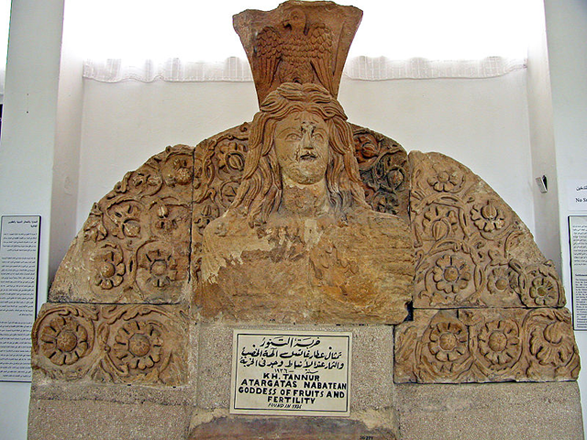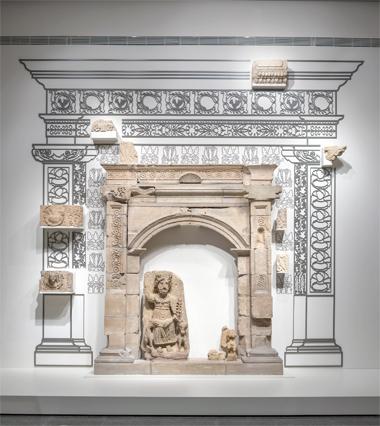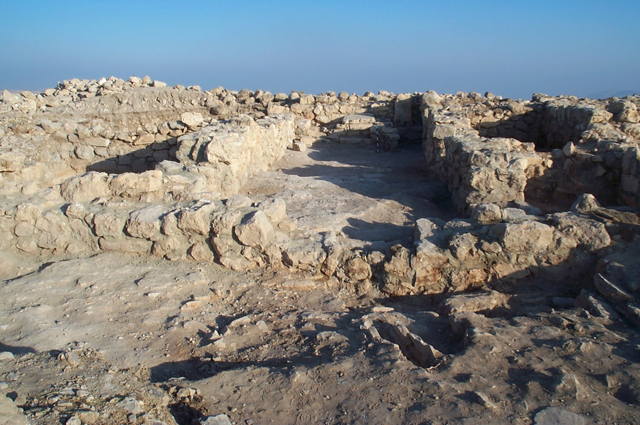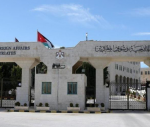You are here
Pagan temples of Jordan: studying Khirbet Tannur’s ancient shrine
By Saeb Rawashdeh - May 04,2024 - Last updated at May 04,2024

Remains of the Nabataean shrine at Khirbet Tannur near the King's Highway (Photo courtesy of ACOR R)
AMMAN — The professor of Pantheon-Sorbonne, Francois Villeneuve, has worked for decades in the region and some of his project included the Nabataean sites in Saudi Arabia, at Medina Saleh, as well as the Nabataean, Roman and Byzantine sites of Jordan. One of those sites is located in Dharih, on the Kings Highway, where Villeneuve excavated a Nabataean sanctuary with a team of scholars.
"In the baren landscape of Edom, Khirbet Tannur is a well-known archaeological site," noted Villeneuve last week at the lecture jointly organised by the French institute Ifpo and ICOMOS Jordan, at Bait Yaish, in Jabel Lueibdeh.
Khirbet Tannur was a site excavated during the British mandate, noted Villeneuve, adding that it was a high place sanctuary. The American archaeologist Nelson Glueck excavated Khirbet Tannur in 1937 on the behalf of the American School of Oriental Research but could not complete the report due to his death.
Unfortunately, the site was difficult to protect from looting and vandalism. Also, some decorations from the site ended up at the Cincinnati Museum in the United States.
The Nabataean temple is located on the top of mount Tannur and it is not clear to whom the shrine was dedicated. There are speculations that the temple was dedicated to the fertility goddess Atargatis and Zeus-Hadad, or the Nabataean gods with similar attributes.
"When we started excavating in Dharih, we were told it was a small sanctuary associated with more important sanctuary in Khirbet Tannur. However, it was the opposite, as Khirbet Tannur was associated to more important shrines in Dharih," noted Villeneuve.
The excavation took place in early 1980’s and it was a team work of the French archaeological team and the Yarmouk University in Irbid.
"The sculptures of the pagan gods were destroyed or defaced at the sanctuary by both Christians and Muslims during the Byzantine and early Islamic periods," Villeneuve said.
The important collection of remaining artefacts from Dharih is placed at the new museum in Tafilah, said the scholar, adding that to restore the sanctuary, the team used services of the local stonecutters and masons.
The 1st century BC is not the best represented in Dharih, although it was the peak of the Nabataean statehood, however, the most prominent temples were built between the 1st century AD and the 3rd century AD, Villeneuve underlined, adding that the Zodiac signs, heads of deities and gorgons, can be seen on the reliefs of the temple.
While no dating is established, the temple went through three different phases: The earliest phase of the temple is usually dated around 8-7 BC, on the account of an inscription engraved on a small stone block while the final phase was dated by Glueck based on the temple's sculptures and architectural principles to about the first quarter of the 2nd century AD. Ceramics, animal bones and charred plant remains have shown that the Nabataeans would come to the shrine to participate in different rituals that included eating and drinking.
Related Articles
AMMAN — Khirbat at-Tannoris, located at the northern border of Edom, near Wadi Al Hasa, was excavated by the American archaeologist Nelson G
AMMAN — The Cincinnati Art Museum is “honoured to work closely” with Jordanian museums and institutions, a relationship that has spanned dec
AMMAN — Khirbat Ataruz is located 24 kilometres south of the town of Madaba, 10 kilometres west of the village Libb and 3 kilometres east of


















